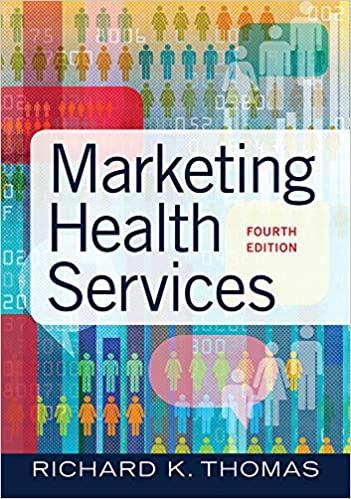Many healthcare organizations came to see the aging of the baby boom generation as an opportunity to
Question:
Many healthcare organizations came to see the aging of the baby boom generation as an opportunity to expand their services. Regional Medical Center (RMC, a fictional organization on which this case study is based) responded to this opportunity by establishing a service line devoted to older adults. The intent was to capture the business—and the loyalty—of this large, relatively affluent, and increasingly needy segment of the population. The service line was designed to meet the emerging needs of this population for specialty services such as cardiology, orthopedics, ophthalmology, and urology in a way that would be appealing to this relatively demanding consumer segment.
Because this service was considered innovative in the community served by RMC, an aggressive promotional campaign was undertaken. RMC’s marketing department considered a wide range of marketing options and decided on a multipronged campaign to approach the target population from a variety of directions. The first phase of the promotional campaign focused on internal marketing. It was important that RMC’s employees be familiar with this new program and be able to articulate its merits to potential customers. Many of the customers for the new program were likely to be existing patients of RMC.
Well before the new program was scheduled to open for enrollment, an aggressive PR campaign was initiated. Press releases were distributed, articles were prepared for local publications and professional journals, and celebrity spokespeople were lined up. Simple yet attractive collateral materials (e.g., business cards, letterhead, envelopes, brochures) were developed for distribution to prospective customers and to referral agents who might channel customers to RMC. Information was distributed to providers and organizations that might serve other needs of the target population, and the community’s major insurance plans were made aware of the new program and its benefits. Tours of the facility housing the new program were provided to key constituents (e.g., referring physicians and health plan representatives), and open houses were scheduled for both medical professionals and the general public.
The marketing initiative also involved direct solicitation of members of the target population. RMC extracted data from its internal database on existing customers and purchased mailing lists of households that included members aged 50 to 65. Using the findings from previous research on the “buttons to push” in this age cohort, marketing staff prepared materials that would appeal to the particular needs of older adults. The address lists were then used to mail materials directly to targeted individuals.
Questions
1. Why did RMC think that older adults presented enough of a market opportunity to establish an entirely new program?
2. What information did RMC need to gather about this target population before the program could be established?
3. What information did RMC need to gather about this target population before the marketing campaign could be planned?
4. What were the different paths through which RMC attempted to reach the target audience?
5. Which marketing techniques did RMC use to reach the target population?
6. Why was internal marketing an important first step in marketing this new program?
Step by Step Answer:






